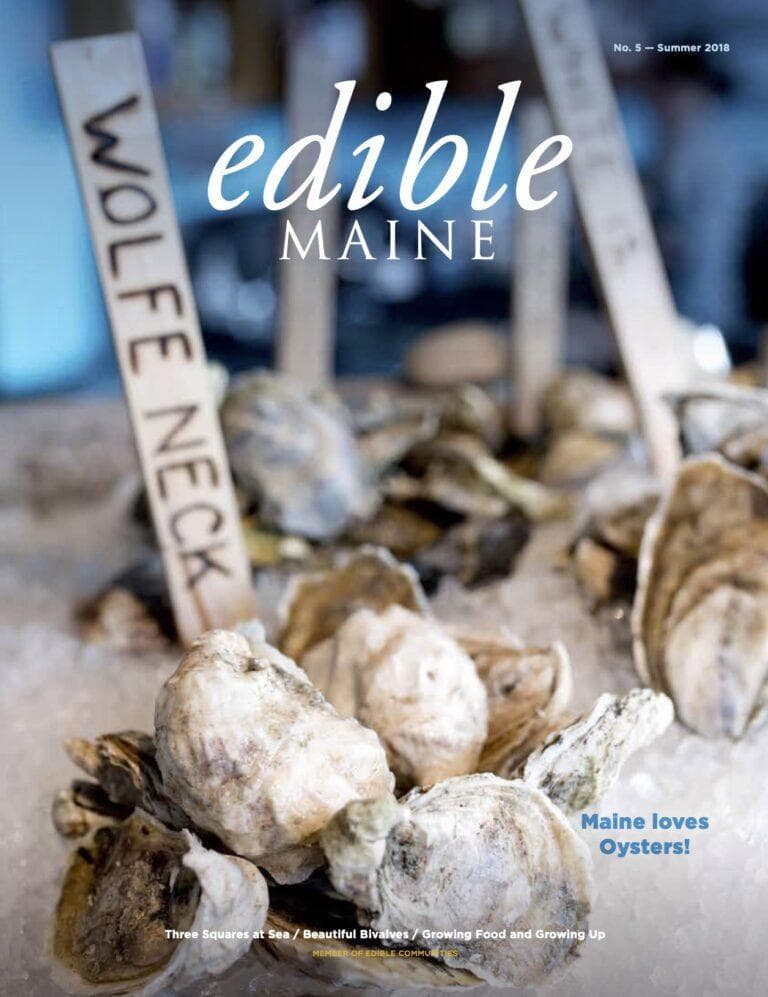Only a generation or two ago, the root cellar was one of the most important places on a New England property. Historically in the basement of a farmhouse, dug into a hillside, or standing alone made of stone, having a place to store the harvest from the summer fields was the insurance policy for a family to be well fed until the next growing season. As I was settling into my life as a farmer in the early 2000s, the book Root Cellaring by Mike & Nancy Bubel was an often-referenced favorite come fall. I romanticized the root cellar as a means for self-sufficiency and learned the skills that are still a quiet cornerstone of most Maine farm businesses today.
Resiliency and a locally inspired diet are well-established parts of the culinary heritage of New England. New England’s land has long been stewarded by Native American tribes like the Wampanoag and Abenaki, who relied on root crops like Jerusalem artichokes and wild onions through the early spring. The creativity of Indigenous and African peoples, particularly in overcoming historical challenges, illustrates the need for all communities to be intentional with their food choices and serves as an example of how a truly local diet is possible.
Many local vegetable farms, including ours, store thousands of pounds of carrots, beets, potatoes, onions, garlic, and cabbage to keep our food supply as diverse as possible through the winter. While walk-in coolers have replaced beautiful stone cellars, these roots are still a quiet practical backbone to eating a locally produced diet in New England. Writing this in early January, a root-filled bowl of soup is at my side, and elecampane, an herbal root, is slowly heating in honey on the stove. As you read this issue in the spring, these roots will have become an even more important staple for our Maine diet, as the greens beautifully highlighted in the Winter 2024 issue of edible MAINE will be transitioning in greenhouses to seedlings for the earliest summer crops.
With spinach, lettuce, chard, and other Maine-grown greens now being grown in our climate year-round, our standards for a local winter diet are changing. When I first started farming, I adapted my palate to only want to eat crops like beets and carrots in the winter, which made those first sprigs of green life come April and May extra special. Now, almost as a delayed reaction, we are experiencing the need to retrain our palates to this traditional New England winter diet.
As a community, our farms, economy, and environment would gain from us embracing the shared human experience of eating with the seasons, and both the joy and challenge of focusing on traditional storage roots as a base for our springtime diet.
WHAT ARE THE ROOTS?
European settlers adapted their traditions to the New England environment, relying heavily on turnips, parsnips, carrots, and rutabagas stored through the winter. Traditional dishes, like root vegetable stews and maple-glazed carrots, became iconic in early New England cooking.
African American communities in New England used their traditional ingredients creatively, often blending them with European and Indigenous foods. For example, the connection between sweet potatoes and springtime meals in African-descended communities can be seen in a modern interpretation of a dish inspired by this fusion, such as a sweet potato and parsnip mash.
A FEW ROOTS OF CHOICE:
Parsnips! The primary roots that farmers are often inclined to harvest both in the fall and the spring, leaving some in the ground over the winter to become even more sugary sweet, parsnips have been identified in literature for centuries. In the same plant family, Umbelliferae, as dill, parsley, fennel, and carrot, it is a root that is both uniquely flavored and versatile. From our European heritage, the parsnip was likely cultivated in Europe before the potato. It’s sweet, but also has a slightly bitter edge, making it an excellent combination with the sweet potato or Jerusalem artichoke, to blend our cultural histories.
A more common storage root, beets are often the vegetable that farmers market customers say they learned to like as adults. Beets are the star of borscht, a traditional Eastern European soup that comes in hot and cold variations and has been a staple in Slavic cuisines for centuries. While red beets are the most common, there are golden, white, and striped varieties like the Chioggia beet, which store well and add a rich, nutritious color to our meals.
Expanding our palates for these vegetables has also been a time-honored connection to the change of the environment with the spring season. The arrival of maple syrup season in early spring often coincided with the use of root vegetables. Roasting or glazing roots with maple syrup became a popular tradition, combining the sweetness of freshly tapped syrup with the earthy flavor of stored roots.
Now that we are seeing the first of the bare ground and fresh growth, pairing our traditional storage roots with the first spring greens like ramps or dandelions ties our seasons together.













